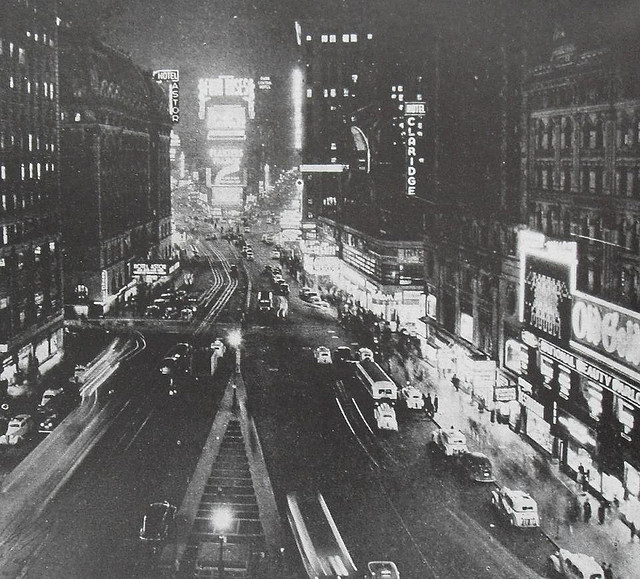
Tomorrow, Misty Copeland, the first African-American woman to be named a principal dancer with the American Ballet Theater, will begin a two week stint on Broadway. Copeland will join the cast of the latest production of On the Town, playing the role of Ivy Smith. Here is a preview and here is Terry Teachout’s review of the production.
In the world of ballet, Misty Copeland is a ground breaker, redefining long-held views regarding the ideal body type of a star ballerina (she is muscular and five-foot-two and a half). Her celebrity status seems to be building bridges to new potential audiences. This interview provides some background on her extraordinary career.
On the Town, which originally opened on Broadway in 1944 with music by Leonard Bernstein and book and lyrics by Betty Comden and Adolph Green, has roots in ballet. It was inspired by Fancy Free, the 1944 Ballet Theater collaboration between Bernstein and Jerome Robbins. At moments Bernstein’s score for Fancy Free may remind you of Stravinsky (5:07), or the bluesy sounds of Gershwin. This impetuous music is far from the blocky, squarely symmetrical phrases of traditional eighteenth and nineteenth century ballet music. Listen for all the fun, irregular, rhythmic surprises and sudden meter changes that continually catch us off guard. Sometimes the music seems to be on the verge of spinning out of control, but, miraculously, it always works itself out.
Here is Bernstein’s 1944 recording with the Ballet Theater orchestra (predecessor to the American Ballet Theater):
On the Town contains the same delirious, off balance, jazzy energy that we hear in Fancy Free. It’s an idealized snapshot of an optimistic, larger-than-life New York of dizzying vitality, and slender, exuberant skyscrapers. In this carefree dreamscape, a group of sailors are on a 24-hour shore leave during wartime 1944. Nothing seems to matter except the present.
The 1960 studio cast recording, conducted by Leonard Bernstein (excerpts below), showcases the virtuosic panache of New York theater musicians in the golden age of the Broadway pit orchestra. The show’s opening explodes with the frenetic hustle and bustle of New York, New York. Bernstein’s score is filled with subtle, but sophisticated details that you wouldn’t find in the average Broadway song. Listen to the repeating bass line of New York, New York and you’ll hear the first four notes of the melody (2:02, 3:09, and 3:59). Then there’s the downbeat defying, canonic madness of the dance music beginning at 4:45 with its irregular meter changes. Later in the excerpt, Bernstein can’t resist sneaking in allusions to Prokofiev (beginning around 7:00) and Shostakovich (9:15):
Additional Listening
[unordered_list style=”tick”]
- Three Dance Episodes from On the Town: Bernstein’s concert suite is made up of significant dance music from the show: Dance of the Great Lover (from the Dream Ballet, Act 2), Pas de Deux (from the “Lonely Town” Ballet, Act 1), Times Square: 1944 (Finale, Act 1). “I believe this is the first Broadway show ever to have as many as seven or eight dance episodes in the space of two acts; and, as a result, the essence of the whole production is contained in these dances,” wrote Bernstein.
- Lucky to Be Me is from near the end of Act 1.
- Some Other Time, the final song in Act 2, hints at the blues with its lowered seventh.
- Find the 1960 studio cast recording on iTunes, Amazon.
- Find Fancy Free on iTunes, Amazon.
[/unordered_list]



